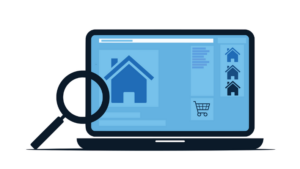Rental Pricing: A Guide for New Landlords
Becoming a landlord can be a lucrative venture, but setting the right rental price for your property is crucial to ensure profitability and attract the right tenants. Rental pricing can indeed be daunting for new landlords, especially in a dynamic market like the UK. This guide aims to simplify the process, offering valuable insights and practical steps to help you set competitive and attractive rental prices for your properties.
Understanding Local Market Dynamics
To effectively price your rental property, it’s essential to understand the local market dynamics. Begin by researching the area’s occupancy rates, which can provide insights into the desirability of the location. Higher employment rates and new developments can boost local demand, while seasonal trends may affect rental demand at different times of the year.
Assessing Local Demand
Assessing local demand involves:
- Employment Rates: Areas with high employment rates typically see higher demand for rental properties.
- Local Developments: New businesses or infrastructure projects can increase the attractiveness of an area.
- Seasonal Trends: Some locations might experience higher demand during specific seasons, like university towns during the academic year.
Understanding these elements will help you anticipate rental market shifts and align your pricing strategy accordingly. Gathering this information using resources like local news outlets, estate agency reports, and property data services is essential.
Competitive Pricing Analysis
Conduct a competitive pricing analysis by examining similar properties in your area. Look for rentals with comparable size, condition, and amenities, and note their pricing and how long they stay on the market. Websites like Rightmove or Zoopla can be excellent resources for this data. Additionally, visiting open houses or viewing listings online can give you a firsthand look at your competition.
Leveraging Local Insights
Engaging with local letting agents can also provide insider knowledge on what renters in your area are looking for and how much they are willing to pay. Building a network with other landlords can offer practical tips and real-world insights into managing rental properties successfully.
Evaluating Your Property
Accurately assessing your property’s value is crucial for setting a competitive rent. Several factors influence rental value, including size, layout, condition, location, and available amenities.

Property Assessment Criteria
Key aspects to consider when evaluating your property:
- Size and Layout: Larger properties or those with versatile layouts generally attract higher rents.
- Condition and Age: Newer properties or those in good condition typically command higher rents.
- Location: Proximity to public transport, schools, shops, parks, and overall neighbourhood appeal are significant factors.
- Amenities: Features like a well-maintained garden, parking, extra storage, and modern appliances can enhance your property’s appeal.
Value-Adding Features
Investing in certain upgrades can significantly boost your property’s rental value. Modern kitchens and bathrooms, outdoor spaces like balconies or gardens, and energy-efficient features are particularly attractive to tenants.
Get Professional Valuations
While you can estimate your property’s value by comparing it to similar properties and assessing its features, professional valuations are invaluable. Consider working with a local letting agent to get a detailed assessment. They can provide a comprehensive valuation based on current market conditions and your property’s unique aspects.
Strategies for Setting Competitive Rent
Finding the right rental price involves balancing competitiveness with profitability. Setting your rent too high can result in prolonged vacancies, while setting it too low can lead to a loss of potential income.
Setting Initial Rents
For new builds in competitive markets, keeping initial rents slightly lower can help attract tenants quickly and reduce the risk of prolonged vacancies. This approach is particularly useful in markets saturated with new listings.
Adjusting Rent Over Time
One of the advantages of non-rent-controlled properties is the flexibility to adjust rents over time. Start with a competitive rate to attract tenants and consider increasing the rent as the market stabilizes and your property stands out.
Avoiding Common Mistakes
Avoid overpricing your property, as it can lead to longer vacancies and financial loss. Conversely, under-pricing can result in lost income and a lower perceived value of your property. Regularly review local market trends and adjust your pricing strategy accordingly to remain competitive.
Leveraging Professional Insights and Tools
Utilizing professional services and online tools can provide accurate rental estimates and market insights. Property managers can offer detailed assessments based on their expertise and local market knowledge. Additionally, online tools like rental estimate calculators can be useful, but always cross-reference their data with your research to ensure accuracy.
Role of Property Managers
Property managers play a crucial role in rental appraisals by evaluating the property’s condition, location, and amenities, and comparing it to similar properties in the area. Their expertise helps in setting competitive rental prices that attract quality tenants.
Utilizing Online Tools
While online tools can offer valuable insights, it’s important to verify their accuracy. These tools should be used alongside your market research to ensure a comprehensive understanding of the rental landscape.
Tips for Maximizing Rental Income
Many property owners and investors aim to maximize rental income. Achieving this can involve regular property maintenance, strategic property upgrades, and effective marketing.
- Regular Maintenance: Keeping your property in good condition and attractive to potential tenants is crucial. This includes cleaning, painting, landscaping, and repairs conducted at least every six months or annually.
- Strategic Upgrades: Investing in energy-efficient appliances, updated fixtures, and smart home technology can increase your property’s appeal and value.
- Effective Marketing: Developing a website, listing your property on rental websites, and leveraging social media can help attract more potential tenants and increase your rental income.
Common Mistakes to Avoid
Avoiding common mistakes that can negatively impact your rental income is a key concern when estimating rent. Overpricing can result in prolonged vacancy periods and decreased potential income, while under-pricing can lead to a loss of potential income and decreased property value. To avoid these mistakes, stay updated with local market trends and adjust your rental prices accordingly.
Conclusion
Setting the right rental price is a blend of art and science, requiring a thorough understanding of local market dynamics, a detailed evaluation of your property, and strategic pricing. By staying informed and adaptable, you can attract the right tenants and maximize your rental income. Remember, the goal is not just to fill the property but to ensure long-term profitability and tenant satisfaction.
As Jamie Johnson, CEO of FJP Investment, noted, “Understanding your market and property is essential to succeed in the rental business. It’s about balancing competitive pricing with offering value to your tenants.”
In summary, use the insights and strategies outlined in this guide to navigate the complexities of rental pricing confidently and effectively. With the right approach, you can turn your rental property into a profitable investment.
ARE YOU READY TO START INVESTING?
Subscribe to our mailing list now for exclusive deals, investment guides and the latest information from the property market.







